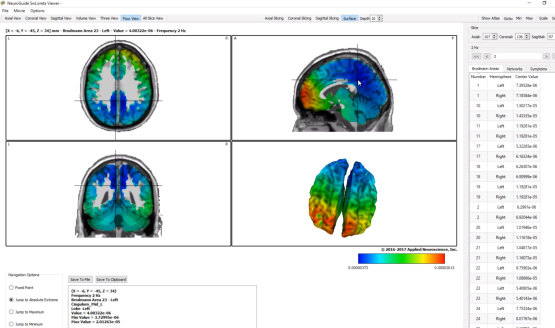Unveiling the Connection Between quantitative EEG and Sleep Apnea Trends for Enhanced Diagnosis and Therapy
Unveiling the Connection Between quantitative EEG and Sleep Apnea Trends for Enhanced Diagnosis and Therapy
Blog Article
Slumber apnea is a prevalent sleep disorder that impacts many people around the globe. It occurs when a individual's respiration is interrupted during slumber, resulting to subpar sleep standards and various health concerns. One of the ways scientists and physicians are working to improve comprehend and diagnose sleep apnea is through a method called quantified electroencephalography, or qEEG. This approach assesses the electrical function of the brain and can provide important insights into how sleep apnea affects cerebral function and general health.
qEEG entails placing small electrodes on the head to capture cerebral waves. These brain waves are then examined to detect patterns that may suggest sleep conditions, including sleep apnea. By analyzing these patterns, healthcare professionals can gain a more precise understanding of how sleep apnea interrupts normal brain activity during sleep. This data can be essential for formulating efficient therapeutic strategies tailored to individual patients. Understanding the relationship between qEEG and sleep apnea can result to enhanced identification techniques and better results for those affected by this condition.
Research has shown that individuals with sleep apnea often exhibit distinct changes in their cerebral oscillation trends. For instance, during instances of apnea, the cerebrum may show increased activity in certain areas while other regions become more engaged. These alterations can influence how effectively a individual slumbers and how refreshed they perceive upon awakening. By using qEEG to monitor these brain wave patterns, doctors can identify specific traits of read sleep apnea in clients, which can assist in formulating a more precise identification. This is particularly crucial because sleep apnea can sometimes be mistaken for other sleep disorders, leading to inappropriate treatments.
In addition to improving diagnosis, qEEG can also play a role in evaluating the effectiveness of treatments for sleep apnea. For instance, after a client starts employing a continuous positive airway force (CPAP) device, which assists maintain the passage clear during slumber, qEEG can be utilized to evaluate alterations in brain activity. If the brain shows improved trends of slumber after initiating treatment, it may suggest that the treatment is functioning well. This response can assist doctors make necessary adjustments to treatment plans, ensuring that patients receive the optimal treatment feasible.
In summary, the relationship between qEEG and sleep apnea trends is an promising area of research that holds promise for improving identification and therapy. By comprehending how sleep apnea impacts cerebral function, healthcare providers can develop more effective strategies to assist clients attain improved sleep and enhance their overall health. As research continues to advance, it is probable that qEEG will turn into an integral instrument in the fight against sleep apnea, leading to better outcomes for those who experience from this difficult disorder.